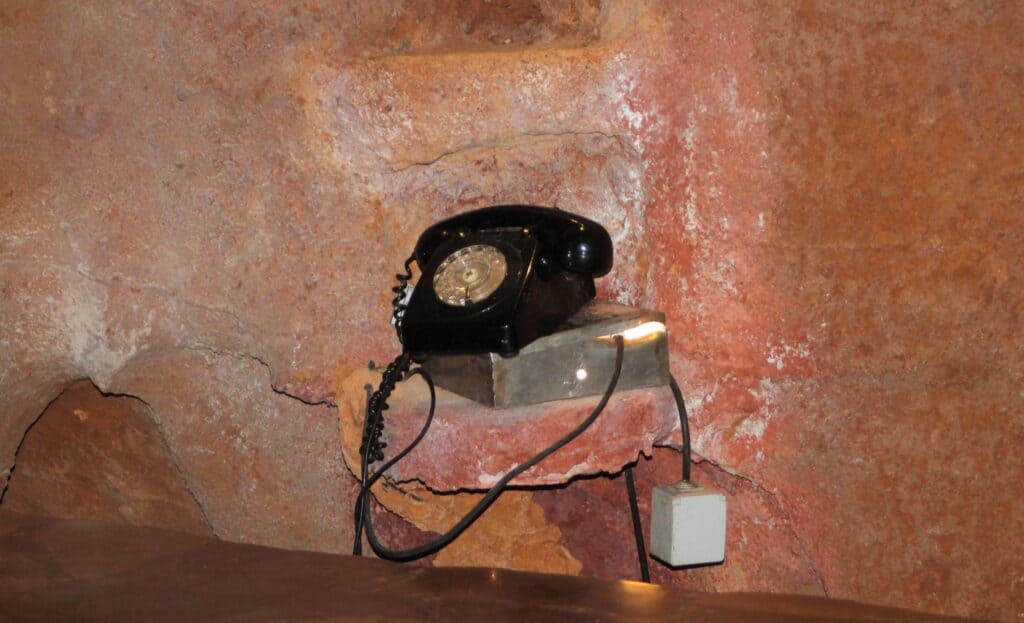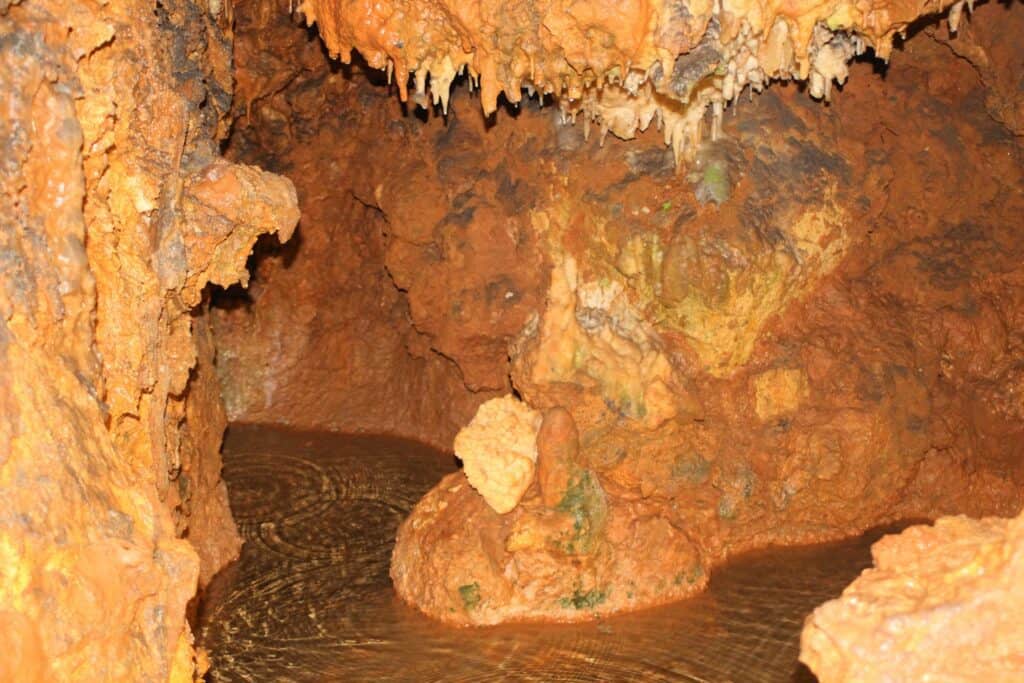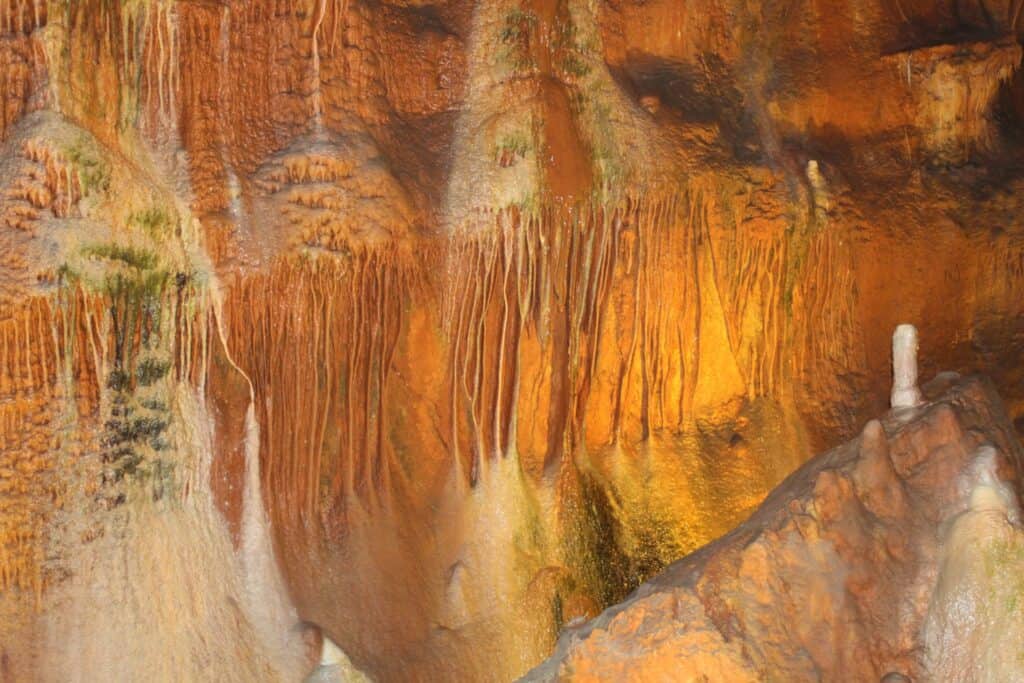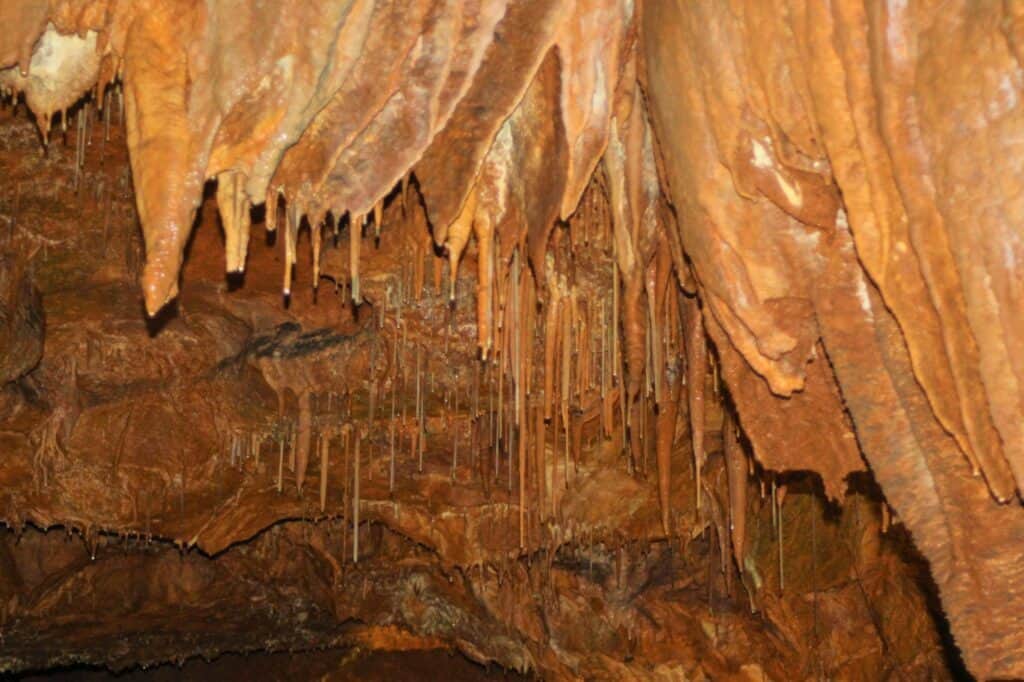The largest cave system in Portugal is one of the country’s seven wonders.

Grutas de Mira de Aire origin story
The Grutas de Mira de Aire (Caves of Mira de Aire) system of caves formed in the limestone of the area’s mountains. The caves themselves were created over 150 million years ago by water eroding the limestone, creating fissures, and ultimately, the caves.

In 1947, locals in the town of Mira de Aire discovered the caves which were found to be over 11 kilometers (almost 7 miles). When news of the newly discovered caves reached Lisbon, speleologists (scientists who study caves), descended on the town and began their research of the natural formation.

At first, they would go down into the caves by lowering themselves with ropes. Stairs, first built out of wood, and later, out of brass, were used to access the caverns.
Public interest in the caves was intense, so more stairs, platforms, and safety measures were put in place. The caves opened to the public in 1974.
Constantly flowing water very, very slowly expands the footprint of the caves and adds to the mineral deposits.
Visiting the Grutas de Mira de Aire
There’s no need to buy your tickets to see the cave in advance. Just walk up to the ticket office, buy your ticket and wait for the next tour to start, it usually is only a few minutes.
The tour starts with a short film about the history of the caves and then your guide will lead your descent. There are over 600 steps down in total, but the guide will have you stop at several points along the way to discuss the history of the caves and all the different interesting formations.

I’ve heard people say that guides only speak Portuguese. Our guide spoke excellent English and conducted the tour in both Portuguese and English.
Also, the caves are a constant 62 degrees all year round, so if you find that temperature chilly, bring a sweater or jacket. There’s a constant flow of water (that’s how the caves were formed), so the stairs will be wet. Sturdy shoes with a good grip are a must. You won’t get soaked by the water, but expect a few drops of water on your clothes. And, these are caves, don’t wear your best clothes.

At the end of the tour you don’t have to hike back up the 600 steps. They’ve built a convenient elevator that whisks you to ground level in a few seconds. From there, it’s a five minute walk back to the parking lot.
The caves are not wheelchair accessible.

Getting to the Grutas de Mira de Aire
A car is the best way to reach the Grutas de Mira de Aire. Mira de Aire is a very small town and there’s no train service and buses are extremely infrequent. Driving takes about 75 minutes from Lisbon.
There’s free parking outside the entrance to the caves and there’s a small cafe on site if you need a snack or drink.
Other Things to do on a Day Trip to Grutas de Mira de Aire
The tour lasts about 90 minutes or so. Add in the driving time from Lisbon (about 75 minutes) and back, a trip to Grutas de Mira de Aire is about a half day.
If you want to pair your cave adventure with something else, there are lots of things to do nearby. Perhaps the most famous is Fatima, a Christian pilgrimage site where local children supposedly saw an image of the Virgin Mary on multiple occasions in 1917.
Tomar, with its castle and Knights Templar attractions is also a great place to visit but probably deserves a full day at the very minimum.
Pairing the Grutas de Mira de Aire with a visit to the town of Batalha and its amazing monastery built to commemorate a Portuguese military victory over the Spanish would make for a very full, but exciting day. I’ve written a complete Foodie Travel Guide to Batalha.

About the Author

Brent Petersen is the Editor-in-Chief of Destination Eat Drink. He currently resides in Setubal, Portugal. Brent has written the novel “Truffle Hunt” (Eckhartz Press) and the short story collection “That Bird.” He’s also written dozens of foodie travel guides to cities around the world on Destination Eat Drink, including in-depth eating and drinking guides to Lisbon, Porto, Sintra, Monsaraz, and Evora in Portugal. Brent’s podcast, also called Destination Eat Drink, is available on all major podcasting platforms and is distributed by the Radio Misfits Podcast Network.
